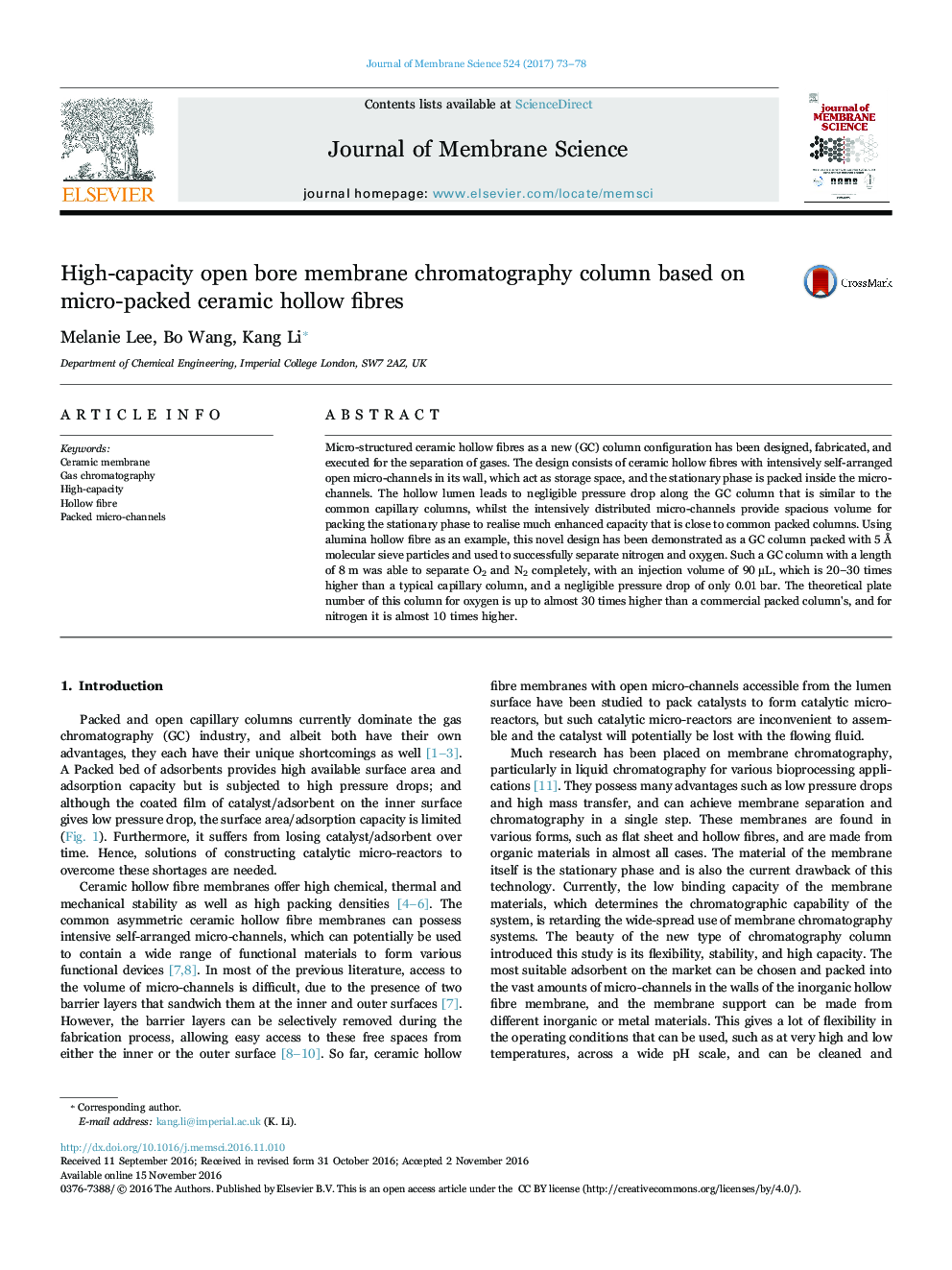| Article ID | Journal | Published Year | Pages | File Type |
|---|---|---|---|---|
| 4989195 | Journal of Membrane Science | 2017 | 6 Pages |
â¢Micro-structured ceramic hollow fibres as a new (GC) column has been proposed.â¢The column is able to separate O2 and N2 completely.â¢The injection volume used is 20â30 times higher than a typical capillary column.â¢The pressure drop is of only 0.01 bar.â¢The theoretical plate number is up to almost 30 times higher than a commercial packed column.
Micro-structured ceramic hollow fibres as a new (GC) column configuration has been designed, fabricated, and executed for the separation of gases. The design consists of ceramic hollow fibres with intensively self-arranged open micro-channels in its wall, which act as storage space, and the stationary phase is packed inside the micro-channels. The hollow lumen leads to negligible pressure drop along the GC column that is similar to the common capillary columns, whilst the intensively distributed micro-channels provide spacious volume for packing the stationary phase to realise much enhanced capacity that is close to common packed columns. Using alumina hollow fibre as an example, this novel design has been demonstrated as a GC column packed with 5 à molecular sieve particles and used to successfully separate nitrogen and oxygen. Such a GC column with a length of 8 m was able to separate O2 and N2 completely, with an injection volume of 90 μL, which is 20â30 times higher than a typical capillary column, and a negligible pressure drop of only 0.01 bar. The theoretical plate number of this column for oxygen is up to almost 30 times higher than a commercial packed column's, and for nitrogen it is almost 10 times higher.
Graphical abstractDownload high-res image (212KB)Download full-size image
